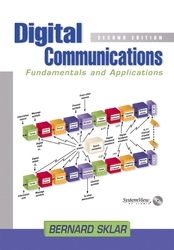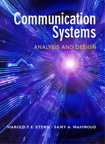買這商品的人也買了...
-
 ASP.NET 程式設計徹底研究
ASP.NET 程式設計徹底研究$590$466 -
 鳥哥的 Linux 私房菜─基礎學習篇增訂版
鳥哥的 Linux 私房菜─基礎學習篇增訂版$560$476 -
 Windows CE 嵌入式系統理論與實務
Windows CE 嵌入式系統理論與實務$680$537 -
 Reporting Service 實戰演練
Reporting Service 實戰演練$690$587 -
 Linux 程式設計教學手冊
Linux 程式設計教學手冊$780$616 -
 PHP 網頁模組隨學隨用
PHP 網頁模組隨學隨用$480$408 -
 Head First Servlets & JSP:SCWCD 專業認證指南 (Head First Servlets & JSP)
Head First Servlets & JSP:SCWCD 專業認證指南 (Head First Servlets & JSP)$880$748 -
 最新詳解 Javascript & HTML & CSS 語法辭典(增訂新版)
最新詳解 Javascript & HTML & CSS 語法辭典(增訂新版)$490$382 -
 類神經網路
類神經網路$480$456 -
 抓住你的 Photoshop CS2 中文版
抓住你的 Photoshop CS2 中文版$650$553 -
 Distributed Systems: Concepts and Design, 4/e
Distributed Systems: Concepts and Design, 4/e$1,190$1,166 -
 深入淺出 Java 程式設計, 2/e (Head First Java, 2/e)
深入淺出 Java 程式設計, 2/e (Head First Java, 2/e)$880$695 -
 Java 5 + Eclipse 視窗應用程式開發─實作進銷系統
Java 5 + Eclipse 視窗應用程式開發─實作進銷系統$560$437 -
 Java 認證 SCJP 5.0 猛虎出閘
Java 認證 SCJP 5.0 猛虎出閘$650$514 -
 如何設計好網站 (Don't Make Me Think: A Common Sense Approach to Web Usability, 2/e)
如何設計好網站 (Don't Make Me Think: A Common Sense Approach to Web Usability, 2/e)$450$383 -
 駭客攻防技術擂臺
駭客攻防技術擂臺$520$442 -
 專案管理之美學 (The Art of Project Management)
專案管理之美學 (The Art of Project Management)$620$490 -
 Ajax 與 Google Map API 入門實作
Ajax 與 Google Map API 入門實作$450$351 -
 最新 JavaScript 與 Ajax 範例活用辭典
最新 JavaScript 與 Ajax 範例活用辭典$390$304 -
 ASP.NET 2.0 深度剖析範例集
ASP.NET 2.0 深度剖析範例集$650$507 -
 操作介面設計模式 (Designing Interfaces)
操作介面設計模式 (Designing Interfaces)$880$695 -
 Visual C# 2005 程式開發與介面設計秘訣
Visual C# 2005 程式開發與介面設計秘訣$750$593 -
 全功能 XOOPS 2.2 架站機速習講座
全功能 XOOPS 2.2 架站機速習講座$480$379 -
 The Wargame:駭客訓練基地─駭客防駭實戰演練
The Wargame:駭客訓練基地─駭客防駭實戰演練$550$468 -
 SQL Server 2005 行動裝置開發指南
SQL Server 2005 行動裝置開發指南$550$468
相關主題
商品描述
Description:
This book provides a comprehensive, up-to-date description of the methodologies and the application areas, throughout the range of digital communication, in which individual signals and sets of signals with favorable correlation properties play a central role. The necessary mathematical background is presented to explain how these signals are generated, and to show how they satisfy the appropriate correlation constraints. All the known methods to obtain balanced binary sequences with two-valued autocorrelation, many of them only recently discovered, are presented in depth. The authors treat important application areas including: Code Division Multiple Access (CDMA) signals, such as those already in widespread use for cell-phone communication, and planned for universal adoption in the various approaches to ‘third-generation’(3G) cell-phone use; systems for coded radar and sonar signals; communication signals to minimize mutual interference (‘cross-talk’) in multi-user environments; and pseudo-random sequence generation for secure authentication and for stream cipher cryptology.
• Golomb is a senior figure in coding theory; he wrote a seminal textbook on shift register sequences in 1967 that is still used
• The first comprehensive treatment of all the known methods to obtain balanced binary sequences with two-valued autocorrelation, many of them only recently discovered
• Provides a unifying theme for a wide variety of communications applications including CDMA telephony, coded radar, and stream cipher generation
Table of Contents:
1. General properties of correlation; 2. Applications of correlation to the communication of information; 3. Finite fields; 4. Feedback shift register sequences; 5. Randomness measurements and m-sequences; 6. Transforms of sequences and functions; 7. Cyclic difference sets and binary sequences with two-level correlation; 8. Cyclic Hadamard sequences, part 1; 9. Cyclic Hadamard sequences, part 2; 10. Signal sets with low cross-correlation; 11. Correlation of Boolean functions; 12. Applications to radar, sonar, and synchronization.
商品描述(中文翻譯)
**書籍描述:**
本書提供了數位通信領域中方法論和應用領域的全面、最新描述,其中個別信號和具有良好相關性特性的信號集扮演著核心角色。書中介紹了必要的數學背景,以解釋這些信號是如何生成的,並展示它們如何滿足適當的相關性約束。所有已知的獲得具有二值自相關的平衡二進位序列的方法,許多方法是最近才被發現的,都在此深入介紹。作者探討了重要的應用領域,包括:碼分多重存取(Code Division Multiple Access, CDMA)信號,例如目前已廣泛用於手機通信的信號,以及計劃在各種“第三代”(3G)手機使用方法中普遍採用的信號;編碼雷達和聲納信號的系統;在多用戶環境中最小化相互干擾(“串音”)的通信信號;以及用於安全身份驗證和流密碼學的偽隨機序列生成。
- Golomb 是編碼理論的資深人物;他於1967年撰寫的移位寄存器序列的開創性教科書至今仍在使用。
- 首次全面處理所有已知的獲得具有二值自相關的平衡二進位序列的方法,許多方法是最近才被發現的。
- 提供了統一主題,涵蓋各種通信應用,包括 CDMA 電話、編碼雷達和流密碼生成。
**目錄:**
1. 相關性的一般特性;
2. 相關性在信息通信中的應用;
3. 有限域;
4. 反饋移位寄存器序列;
5. 隨機性測量和 m-序列;
6. 序列和函數的變換;
7. 循環差集和具有二級相關性的二進位序列;
8. 循環哈達瑪序列,第1部分;
9. 循環哈達瑪序列,第2部分;
10. 具有低交叉相關性的信號集;
11. 布爾函數的相關性;
12. 在雷達、聲納和同步中的應用。












